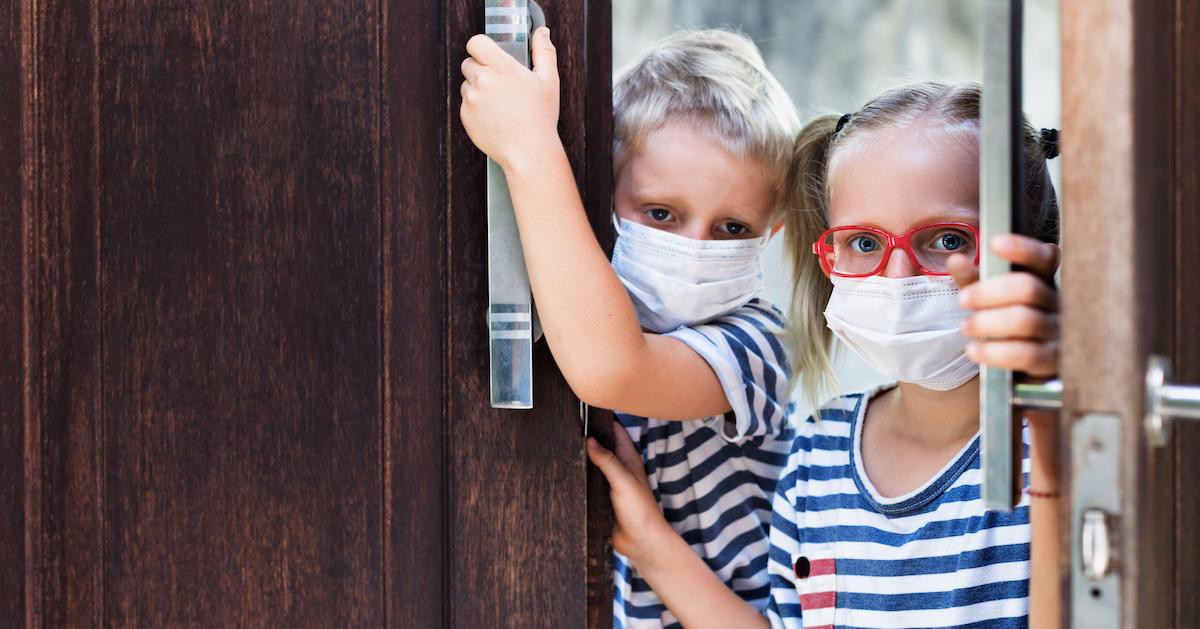Children are very unlikely to die of Covid-19

21 July 2021
Readers have asked us to explain a public argument between scientists over the dangers of Covid-19 to children.
The argument took place on Twitter, and concerned a BBC News article published on 9 July about recent scientific research that assessed the risk of death or severe disease from Covid-19 for children and young people in England. The research was a preprint, which means it hadn’t yet been formally scrutinised by other scientists.
The BBC article summarised the research, saying: “Data from the first 12 months of the pandemic in England shows 25 under-18s died from Covid, putting the overall risk of death at around two in a million children, scientists estimate.”
This sentence could mean different things. Is it talking about how dangerous Covid is to the children who catch it? Or is it talking about how dangerous the first year of the Covid pandemic was to children in England as a whole?
The scientific paper itself was clear about what it meant. It said in its conclusion: “25 [children and young people] died of SARS-CoV-2 during the first pandemic year in England, equivalent to an infection fatality rate of 5 per 100,000 and a mortality rate of 2 per million.”
So this research is saying that the risk to children in England as a whole of catching and then dying of Covid, often called the “mortality rate”, was two in a million. The BBC article may have been trying to make this clear by describing this as the “overall risk of death”. (In a separate graphic, it also said that two in a million was the “absolute risk of death from Covid-19 in children”.)
Meanwhile, the research estimates that the risk of death to a child who has caught Covid, often called the “infection fatality rate”, is much greater, at 5 in 100,000. (This estimate is disputed and may be too high, for reasons we will come to later.)
On 9 July, a scientist questioned the figures in the article on Twitter, suggesting that it had miscalculated the risks. The following day, another scientist repeated the point in more detail, saying: “It appears that the rates of death and hospitalisation have been calculated by dividing by the total number of children in the population, not the number that have been infected, hugely underestimating risk.”
From this, it sounds like he thought the article had used the wrong figures to calculate the infection fatality rate, when in fact it was talking about the mortality rate.
This was not the end of the confusion, however. Some other doctors and scientists seemed to believe that these were criticisms of the research itself, rather than the BBC article. Some defended the research in response.
The BBC later removed the phrase “putting the overall risk of death at around two in a million children, scientists estimate” from the original article, and added various phrases to make the new version clearer.
How dangerous is Covid to children?
We’ve written before about why it’s difficult to calculate the proportion of infected people who die of Covid.
To start with, you need to know how many people the virus has killed. This was especially difficult at the beginning of the pandemic, when testing was less common. And it still requires an expert medical opinion to determine whether Covid itself was the underlying cause of each death.
You also need to know how many people were infected, which is even more difficult, because many people have never been tested, and some infected people show no symptoms.
Nevertheless, it is certainly clear from many studies that younger people, and children in particular, are much less likely to die than adults, if they catch Covid. The reasons for this have been widely researched.
In the research reported by the BBC, scientists looked at death records in England and concluded that 25 people under 18 died as a direct result of the Covid virus up to the end of February 2021. Of these, 19 had some kind of chronic health condition and most were aged 10 or older.
For the same period, the researchers quoted an estimate from Public Health England (PHE) that 469,982 children were infected with the Covid-causing virus (which amounts to about 4% of the 12 million children in England). We’ve not been able to find this estimate from PHE, but this number was used to calculate the infection fatality rate that the study mentions, of about five deaths per 100,000 child infections. For younger children, or those without chronic health conditions, it would be lower.
However, another scientist has argued that even this may overestimate the danger of Covid to children, because he claims that the PHE figure underestimates the number who caught it.
In support, he cites two antibody surveys of children and young people by PHE, which measure the proportion of people who have Covid antibodies, indicating that they’d been exposed to the virus. They are not perfect, because one measures antibodies in routine blood samples from children’s hospitals, which may not be representative of children as a whole, while the other looks at children and young people under 25, which includes some adults.
However, these surveys estimated that at least 4% of children and young people had already been infected with the virus in the spring of 2020. And this was before the large second wave of infections that followed in the autumn and winter, so you would expect the total infected by the end of February 2021 to be significantly more.
Looking at Office for National Statistics estimates for antibodies among 16-24-year-olds, he estimates very roughly that about 20% would have caught Covid by the end of February this year.
The MRC Biostatistics Unit at Cambridge University also suggests that many more children caught Covid in this period. Its latest publication at the time of writing shows that a central estimate of 1.3 million children aged 14 or younger caught Covid by the end of February—a total that would be higher if it included all under-18s.
If these estimates are correct, they would further reduce the already very low risk of dying of Covid for any children who caught it in this period.


